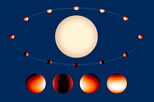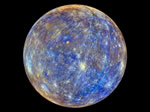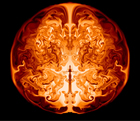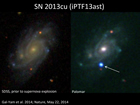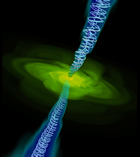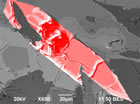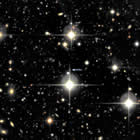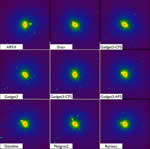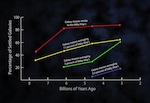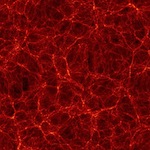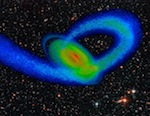Word doc
PDF (formatted and ready to go as a single newsletter page)
Planck: Revising the Universe
The Universe is about 100 million years older than previously estimated and is expanding slightly more slowly; it also has slightly more dark matter and a bit less dark energy than previously suspected. There is no evidence for an additional neutrino-like relativistic particle beyond the three families of neutrinos that have already been discovered; their total mass is not more than 0.23 electron volts, about half the upper limit from the earlier results from NASAs Wilkinson Microwave Anisotropy Probe (WMAP).
Those are the key findings revealed by the most accurate and detailed map of the cosmic microwave background (CMB)—the oldest light in the Universe, dating back to 370,000 years after the Big Bang—produced from the first 15.5 months of data from the Planck satellite and analyzed using one of the world’s most powerful supercomputers.
The researchers included, among others, University of California faculty from Berkeley (George Smoot and Martin White), Berkeley Space Sciences Laboratory (R. Keskitalo), Davis (Lloyd Knox), the U.S. Department of Energy National Energy Research Scientific Computing Center (NERSC) at the Lawrence Berkeley National Laboratory (Julian Borrill and T.S. Kisner), and Santa Barbara (Philip Lubin, P. R. Meinhold, and Andrea Zonca).
A trillion data points
The Planck satellite, designed and built by the European Space Agency (ESA) with significant contributions from the U.S. National Aeronautics and Space Administration (NASA), was launched in May 2009 and began scientific observations in mid-August.
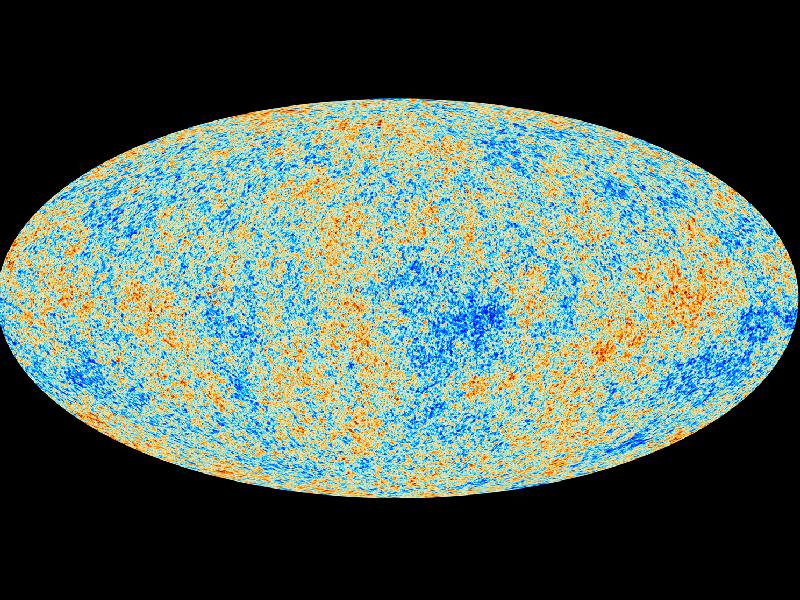
Planck map of the cosmic microwave background shows tiny fluctuations in temperature, which correspond to regions of different densities: denser regions eventually coalesced into today’s galaxies and stars. Credit: ESA and the Planck collaboration
Plank is 930,000 miles away, on the opposite side of Earth from the sun, in the gravitationally semi-stable L2 libration point where it keeps up with Earth in its orbit. That orbit plus Plank’s spinning on its axis allows the spacecraft’s 72 detectors to scan successive narrow (2 arcminutes wide) strips or rings around the heavens, building up a map of rings covering the complete sky twice a year. As Planck measures some 10,000 samples per second, in its first 15.5 months of observing, it has gathered a trillion data points.
Analyzing such a massive data set is a monumental computational challenge. So in 2007, before the spacecraft was launched, NASA and the DOE negotiated a formal interagency agreement that provided the Planck mission multiyear access to NERSC.
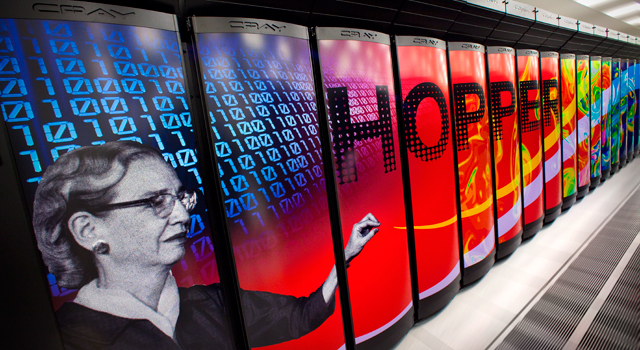
Cray XE6 supercomputer Hopper, named for 20th-century computer scientist Grace Hopper, performed most of the Planck calculations. Hopper is at the DOE National Energy Scientific Computing Center at Lawrence Berkeley National Laboratory,
Credit: Roy Kaltschmidt
Especially challenging is the task not only of separating the CMB from the unavoidable instrumental noise and foreground signals from our Milky Way galaxy, but also of then understanding precisely how well this separation has been done. Using a technique called Monte Carlo simulations, the data were crunched on NERSC’s 150,000-core Cray XE6 supercomputer Hopper.
Refining our understanding
Although future data releases in 2014 and 2015 will add in results from polarization and other measurements, this first release of data reveals results that are already surprising.
The Planck data reveal that the Universe is 13.8 billion years old, more precise than the previously accepted age of 13.7 billion years. The Hubble constant—the rate at which the Universe is expanding—is revised downward to only 67.80 plus or minus 0.77 kilometers per second per megaparsec (a megaparsec is about 3 million light-years).
Planck’s results also indicate that dark energy makes up “only” 69.1 percent (plus or minus 1.0 percent) of the density of the Universe (instead of 71.4 percent as measured by WMAP). Thus, dark matter and ordinary matter make up a heftier 30.9 percent.
–Trudy E. Bell, M.A.
Further reading: The LBNL press release appears at http://newscenter.lbl.gov/news-releases/2013/03/14/massive-planck-simulations/, the NERSC release at http://www.nersc.gov/news-publications/news/science-news/2013/planck-results/, the Davis release at http://blogs.ucdavis.edu/egghead/2013/03/21/plancks-new-map-brings-universe-into-focus/, and the Santa Barbara release at http://www.ia.ucsb.edu/pa/display.aspx?pkey=2967. Papers have been submitted to Astronomy and Astrophysics; preprints appear at http://www.sciops.esa.int/index.php? project=PLANCK&page=Planck_Published_Papers .
The University of California High-Performance AstroComputing Center (UC-HIPACC), based at the University of California, Santa Cruz, is a consortium of nine University of California campuses and three Department of Energy laboratories (Lawrence Berkeley Laboratory, Lawrence Livermore Laboratory, and Los Alamos National Laboratory). UC-HiPACC fosters collaborations among researchers at the various sites by offering travel and other grants, co-sponsoring conferences, and drawing attention to the world-class resources for computational astronomy within the University of California system. More information appears at http://hipacc.ucsc.edu .
